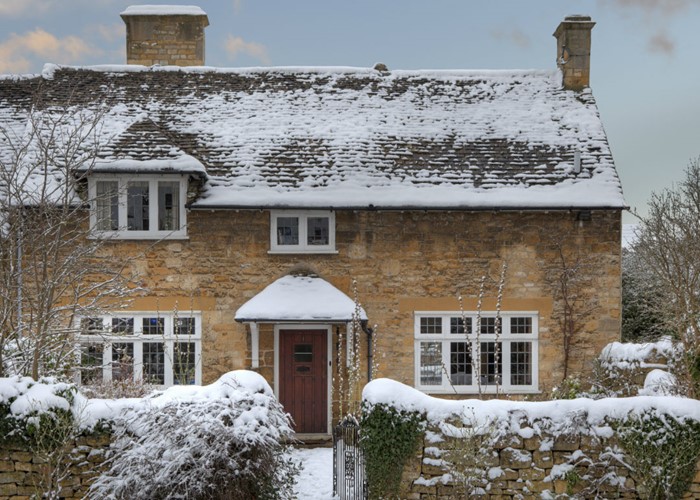Why commonhold, the alternative to leasehold, has failed

Introduced in 2004, commonhold was hailed as the new way to own a flat – so why has it flopped?
Flat owners have long complained about the “feudal” system of leasehold, so when the Commonhold and Leasehold Reform Act 2002 introduced commonhold ownership, it should have put an end to the problems many flat owners faced.
Commonhold was a new form of title based on US and continental forms of condominium or “strata” ownership. It aimed to give flat owners real ownership of their properties rather than just a long lease.
But commonhold has died a slow, invisible death. What went wrong?
Freehold and leasehold
Ask any leaseholder what’s wrong with the leasehold system and I guarantee you they’ll have a horror story to tell you. The baddies in the story will undoubtedly be the freeholder and their evil henchmen, the managing agents.
Add to the story the sub-plot of an asset depreciating in value and you can see why leasehold is not popular. Despite this unpopularity, it’s very common though. Most flats are sold this way.
If you’re lucky, you’ll find a flat sold with a share-of-freehold. Technically still leasehold, this arrangement means the freehold is held by a company in which all the leaseholders own a share. It means decisions about work and costs can be taken by the leaseholders themselves, albeit by a democratic vote or a board of directors.
Compare mortgages with lovemoney.com
The introduction of commonhold
“Commonhold” was introduced in 2002 with the first properties being able to be sold this way in 2004.
With a commonhold set-up, residents own their own properties or “units” but also have obligations to a Commonhold Association (CA) to which all residents in the block automatically belong.
The CA is required to manage the Commonhold in accordance with the terms of the Commonhold Community Statement (CCS). The CCS sets out the extent of the commonhold properties, the rights and obligations of the CA and unit-holders, and procedures for dispute resolution. The CA must be a limited company registered at Companies House and with HM Land Registry.
The CA deals with the upkeep of the common parts of the building such as the roof, stairs and landing. The association is democratic; each owner has a vote and what needs to be done, in terms of repairs, service charges and so on, is decided by a majority vote.
There’s also no lease with commonhold, eliminating the issue of the flat losing value each year.
It sounds good, right? So why did it all go wrong?
Compare mortgages with lovemoney.com
Why commonhold didn’t work
It’s difficult to find any up-to-date figures about the number of commonhold units sold, but there appears to only be about 20 developments at the last count.
A Google search for “commonhold property for sale” failed to come up with any commonhold units currently on the market.
There are numerous reasons for commonhold effectively failing, but one possible reason is that no one wanted to go first.
Developers were reluctant to build blocks of flats on a commonhold structure in case they didn’t sell; mortgage lenders weren’t massively keen to lend on commonhold properties; solicitors didn’t fall over themselves to get involved; and all this meant a lack of demand from buyers for commonhold properties.
It’s fairly obvious why developers weren’t over enthusiastic about commonhold – as far as they’re concerned there’s nothing wrong with leasehold. Flogging the freehold of a block of flats or development is a big source of revenue for home-builders and they weren’t in a rush to give it up.
The 2002 Act also made it possible for existing leaseholders to switch over to commonhold tenure. However the legislation required unanimity from everyone with an interest in the block, including all the leaseholders, their mortgage lenders, and the freeholder. So, with democracy out the window as far as switching from leasehold to commonhold was concerned, few blocks if any went down this route.
Other options
With commonhold effectively a dead duck – for now at least – there are other options for disgruntled leaseholders.
The first is right-to-manage which enables leaseholders to group together, sack the existing managing agent and employ their own. However, acquiring the right-to-manage can be a long, expensive process and the terms of the lease still need to be stuck to.
The second is for leaseholders to club together to buy the freehold, grant all the leaseholders 999 leases and manage the block themselves. But again, getting agreement from enough flat owners and getting the wheels in motion can be time-consuming and costly.
Compare mortgages with lovemoney.com
More on buying and selling property:
How to beat Stamp Duty
Pros and cons of buying ex-local authority property
OFT to investigate rip-off leasehold charges
Five reasons you should never buy leasehold
Comments
Be the first to comment
Do you want to comment on this article? You need to be signed in for this feature